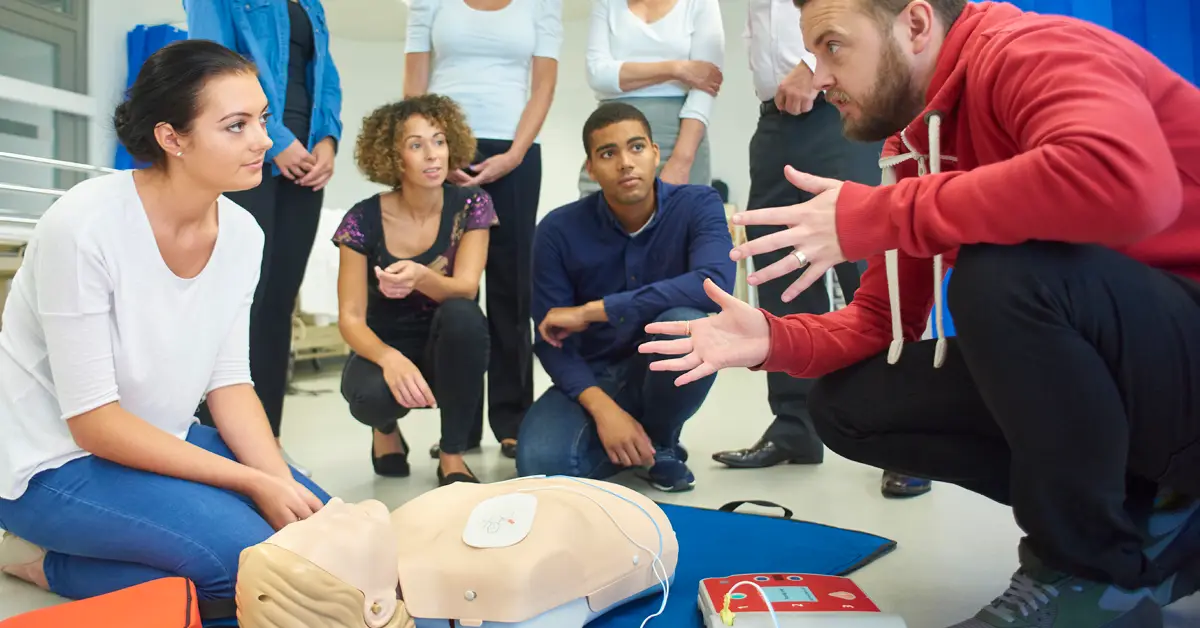Are you a new instructor looking for best practices to begin teaching CPR or a seasoned instructor looking for a refresher on the basics of an effective CPR class? We've compiled five tips to help ensure you're teaching CPR effectively every time you step in the classroom.
1. Plan ahead to make the most of class time
Teaching others to save lives is no easy task. By planning ahead for each of your CPR classes, you will be ready to engage with each student during class time to ensure they learn the skills needed to respond in an emergency situation. Here are a few ways you can plan ahead for success:
- Review your course roster and ensure you have answered any logistical questions in advance of the scheduled class time. This will decrease the number of questions asked when you arrive in the classroom, allowing you to devote the entirety of your time to teaching.
- Make a list of the CPR training equipment you will need to effectively teach your students CPR (i.e., the appropriate number of mannequins, AEDs, etc.) and be sure they are clean, sanitized, packed up, and ready for use. Also, be sure to have the necessary items on hand to sanitize the equipment after each use during class time.
- Consider your audience. Is this the first time your students will be learning CPR or is this a refresher course for them? Are they healthcare professionals or laypeople in your community? Determine the makeup of your class and tailor your training accordingly. Of course, the skills will remain the same, but perhaps there are ways to discuss scenarios relevant to the specific emergency situations they may encounter.
2. Rely on the CPR curriculum and instructional resources provided by a national training organization
Choosing nationally recognized training materials that meet the latest Consensus on Science and Treatment Recommendations from the International Liaison Committee on Resuscitation (ILCOR) and the current Cardiopulmonary Resuscitation (CPR) and Emergency Cardiac Care (ECC) guidelines are critical to ensuring you are teaching others the most up-to-date scientific methods to save a life.
In addition to student resources (student manuals, eBooks, etc.), most training organizations also provide instructor resources to help guide you as you plan your course. Prior to stepping into the classroom, make sure you have reviewed all the materials thoroughly so you are prepared to answer any questions that may arise.
3. Practice, practice, practice
The idea of standing up in front of a classroom full of students can certainly be daunting. Teaching takes lots of practice and repetition. After reviewing the course materials, consider teaching the CPR skills to family members or friends. Trying out your teaching methods in an environment that's comfortable for you will help you determine what works well and what may need tweaking prior to teaching your first course out in the community.
It's perfectly normal to feel nervous before or even during your first few classes. If you make a mistake or your voice shakes a bit, be candid with your students and share with them that you're still honing your teaching skills. More likely than not, your authenticity will earn you respect from your students.
4. Make CPR training relevant to your students and instill confidence in their skills
Remember the old adage from your high school English teacher: "Show, don't tell?" Well, in today's media-driven society, those words still ring true. ECSI has found that it is one thing to tell students about the importance of emergency care training, but the message truly resonates when they actually experience a life being saved or when real-life examples are shown in class. So, how can you incorporate these examples in your training? When you see a reporter on your local news interview a teacher who performed CPR on an unresponsive student or hear about a camp counselor who performed First Aid on a camper who was seriously injured miles from their campsite, bring the video to your class or invite the camp counselor to speak at your next training session! These seemingly simple actions allow your students to see how necessary emergency care is in our everyday lives and will encourage them to respond effectively when the time comes.
5. Stay organized, clean and sanitize training materials, and be prepared for your next course
When your CPR class has wrapped up, build in extra time to get prepared for your next course. Here are a few ways to get started:
- Keep your course administration materials organized and up-to-date. This will serve you well as you look to retain students for refresher training or promote new courses to them in the future.
- Often the last thing you'll want to do after you finish teaching a CPR course is to lug your training equipment back to your office or home and clean and sanitize each item. Resist the urge to leave these items packed up and instead clean them up and get them ready for your next course. Doing so will ensure you're ready to teach when the opportunity presents itself.
- Take stock of how the CPR course went. Were there areas you felt went well? Were there areas you know could be improved in future courses? Did any questions arise that you did not have answers to? Were any examples shared by students that could help in future courses? Take a few minutes to write down your thoughts on paper. As you continue teaching, you will be able to use this information to enhance your course.
Are you ready to teach your next CPR course? For more information about training with ECSI or to explore our CPR and AED training materials, please visit our website today.
